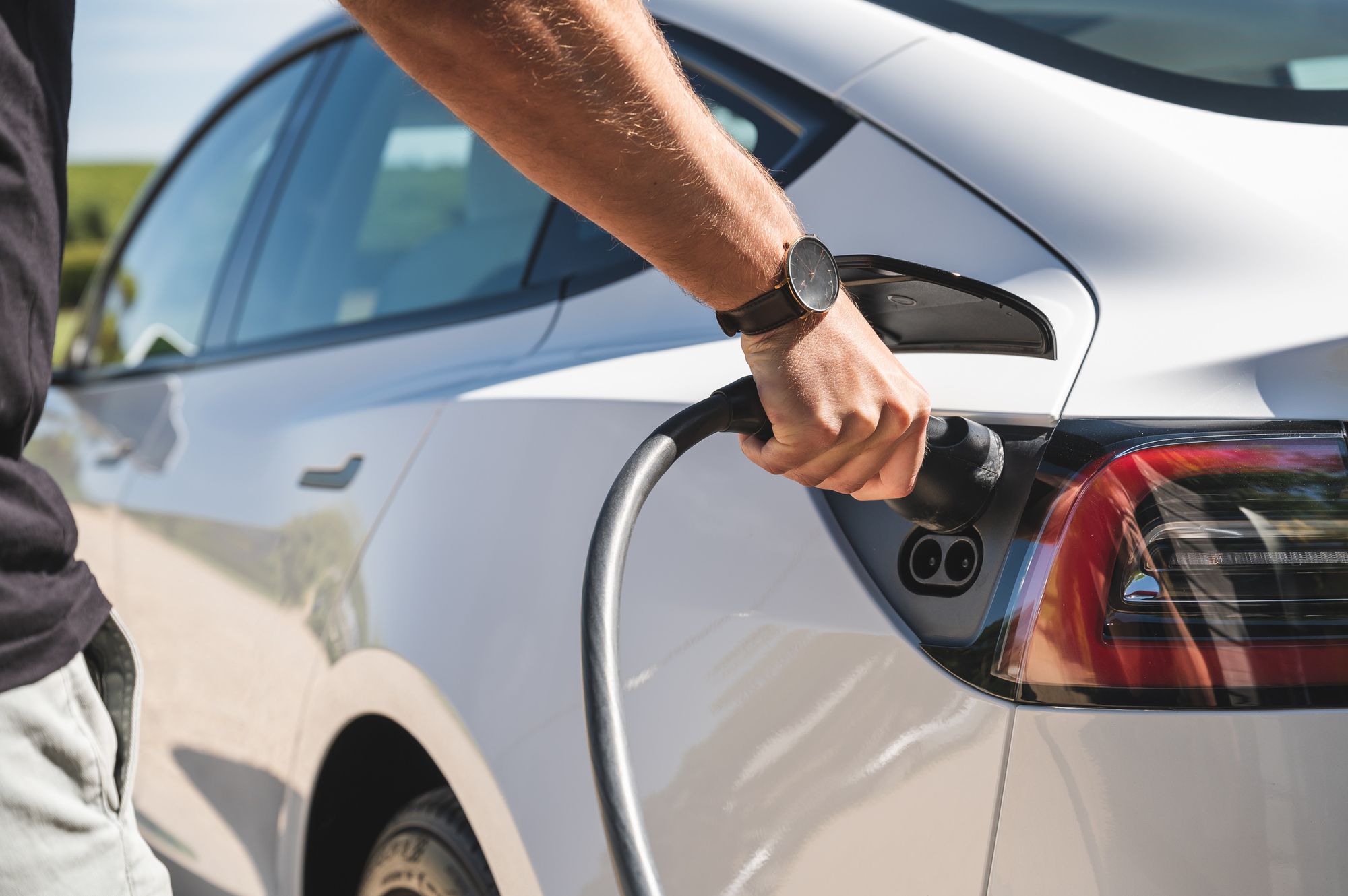If you’re thinking of renting your first electric car on evee, you might be a bit nervous about how to charge it (after all, we’re so used to filling up a car with petrol!). The truth is, charging an EV is actually pretty simple. In this guide, we help break down the basics so you can relax and enjoy your rental to the fullest.
Charging 101
In case you didn’t already know, electric cars don’t have an engine that requires petrol or diesel to run. Instead, they have a battery that needs to be ‘charged’. When it comes to charging your EV, there are two main things you have to consider: charger level and charger type.
Charger Level
The level of the charger refers to the power and speed of the charging session. The higher the level, the more powerful the charger and the quicker it will be to charge your EV. Low level chargers use less power so take longer to charge your car, but are often cheaper.

Level 4 (Ultra-fast)
EV technology is constantly being updated and one of the latest improvements is the ultra-fast charger, charging up your electric car within 10 – 40 minutes. The power of one of these level 4 chargers ranges from 120 – 350 kW and can add anywhere from 400 to 1000 km range per hour. Usually located along a highway, these ultra-fast chargers are best if you’re in a hurry and need to get back on the road quickly!
Level 3 (Fast)
Fast chargers are still very effective and can have your EV charged within 20 – 60 minutes. Providing 50 kW of power and between 250 – 500 km range an hour, these level 3 chargers are typically located along main arterial routes such as motorways and highways, or in metropolitan locations. They’re very common (in fact you’ve probably seen them around already), fairly inexpensive, and a good solution for when you need a quick charge.
Level 2
Level 2 chargers are best suited if you have a few more hours to spare under your belt, as it’ll take 1 – 5 hours for a full charge. Using 7 – 22 kW power, they provide 30 – 120 km range per hour. You can normally find these chargers around carparks and shopping centres, or near commercial or residential properties. An example of a level 2 charger is the Tesla Destination Charger, which encourages you to use the local services while you wait.
Level 1
The slowest and weakest charge is from a level 1 charger, requiring 5 – 16 hours to fully charge your electric car. With a measly 2.4 – 3.7 kW of power, you’re getting just 10 – 20 km range an hour. This option is suitable if you have somewhere to plug in overnight, like a wall socket at home.
Charger Type
The speed of your charging session isn’t the only thing to consider, as you also need to think about the type of charger that is going to be plugged into your electric car. There are different EV manufacturers and they don’t all use the same plugs.
In Australia, the most common charger types are Type 2, CCS and CHAdeMO, which can be found at most major public charging stations. Check your evee listing to see which plugs are compatible.

Finding a Charging Station
Now that you know the terminology, you might be wondering how to actually charge an EV and where to go. To find a public charging station, visit the PlugShare website. It has a map of all available chargers across Australia, so you can find one close to home. It’ll also provide information about the plug types available, cost to charge, and whether or not the charger is currently being used. PlugShare is a great resource to plan your EV journey!
Once you arrive at the charging station, there will be instructions on site on how to charge the electric car and depending on the network, you may have to download an app.
We hope this guide has helped answer some of your charging questions. If there’s anything you’re still uncertain about, ask your evee Host as they are full of charging knowledge!



